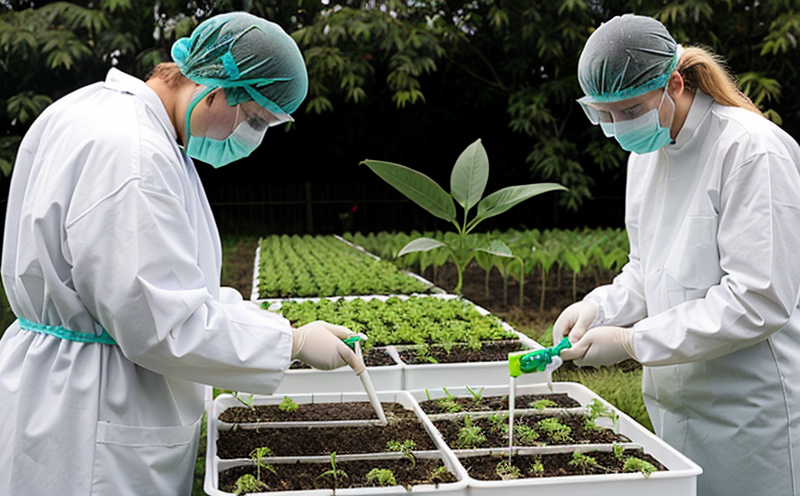Immunofluorescence Assay for Plant Pathogens
The Immunofluorescence Assay (IFA) is a powerful diagnostic tool used to detect the presence of specific plant pathogens. This assay leverages fluorescent antibodies, which bind to target antigens on the surface of the pathogen, making it visible under a fluorescence microscope. IFA provides rapid and accurate detection with high sensitivity, enabling precise identification of pathogenic organisms such as bacteria, fungi, viruses, and viroids in various plant tissues.
The assay is particularly valuable for early diagnosis in agricultural settings where quick intervention can prevent widespread disease outbreaks. It is suitable for a wide range of plant species including cereals, fruits, vegetables, and ornamental plants. By identifying pathogens at an early stage, farmers and researchers can implement targeted control measures to minimize crop loss.
The IFA process involves several key steps: first, the tissue samples are prepared by cutting or grinding them into small pieces. These samples are then incubated with fluorescently labeled antibodies specific to the target pathogen. After incubation, any bound antibodies are visualized under a fluorescence microscope. This allows for direct observation of the pathogens within the plant tissues.
The sensitivity and specificity of IFA make it an essential tool in both research and commercial settings. It is widely used in breeding programs to screen for resistant varieties or to monitor the spread of emerging diseases. In quality assurance, IFA helps ensure that agricultural products are free from harmful pathogens before they reach consumers.
Compared to other diagnostic methods like ELISA (Enzyme-Linked Immunosorbent Assay) and PCR (Polymerase Chain Reaction), IFA offers several advantages: it is faster, requiring only a few hours for results, whereas PCR can take days. Additionally, IFA does not require the use of radioactive or toxic substances, making it safer for both personnel and the environment.
The application of IFA in agriculture extends beyond mere diagnosis; it plays a crucial role in understanding disease dynamics. By identifying which pathogens are present and their distribution within plants, researchers can develop more effective strategies to combat plant diseases. This includes developing new pesticides or enhancing plant resistance through genetic modifications.
Applied Standards
| Standard Name | Description |
|---|---|
| ISO 16140-3:2015 | Microbiology of the environment - Part 3: Detection, identification and quantification of microorganisms in soil, water, air and on surfaces by immunological methods. |
| ASTM E1874-09 | Standard Practice for Use of Fluorescence Microscopy in the Identification of Fungi in Air Samples Collected with Impingers or Impactors. |
| EN ISO 26373:2018 | Veterinary medicine - Immunological methods for detection and quantification of bacteria, viruses, fungi and parasites in biological matrices. |
Why Choose This Test
- High sensitivity and specificity, allowing for accurate detection even at low pathogen concentrations.
- Rapid results, providing timely information to implement control measures immediately.
- Non-toxic and safe for use in both laboratory and field settings.
- Cost-effective compared to other PCR-based diagnostic methods.
- Capable of detecting a wide variety of pathogens including bacteria, fungi, viruses, and viroids.
- Supports breeding programs by identifying resistant varieties early in the process.
- Facilitates monitoring of emerging diseases and their spread within agricultural environments.
International Acceptance and Recognition
The Immunofluorescence Assay is widely recognized by international standards organizations such as ISO, ASTM, and EN. Its reliability in detecting plant pathogens has made it a preferred method for compliance with global agricultural regulations.
In many countries, IFA is used to ensure the safety of agricultural products being exported or imported. It helps maintain trade relationships by confirming that plants meet international health standards set by organizations like the World Organization for Animal Health (OIE) and the Food and Agriculture Organization (FAO).
Research institutions around the world use IFA as a standard procedure in their studies on plant pathology. Its acceptance in scientific literature and its role in regulatory compliance make it an indispensable tool for both academia and industry.





